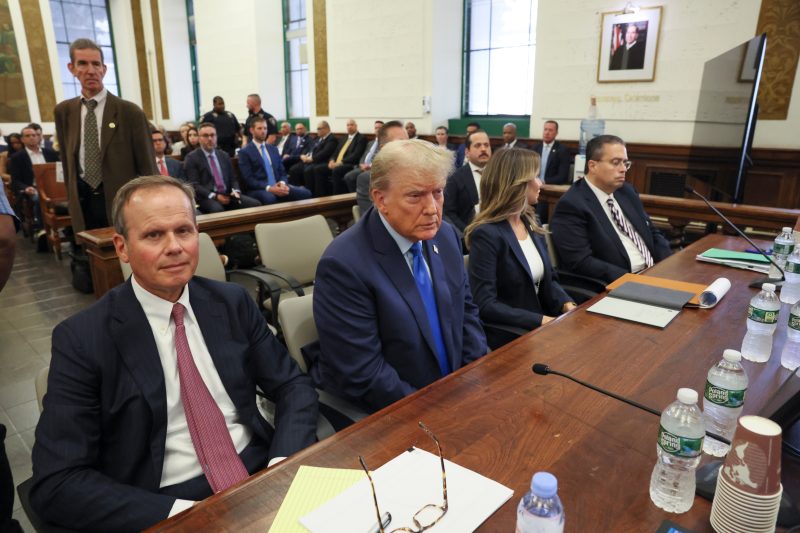About nine months after Donald Trump was inaugurated as president in 2017, ProPublica published a striking — if not surprising — story.
A few years before, Trump’s daughter Ivanka Trump and son Donald Trump Jr. were the targets of a criminal investigation in Manhattan centered on their efforts to sell condominiums in the new Trump SoHo. According to individuals who spoke to the news outlet, there existed emails in which the Trumps allegedly discussed their use of false information to sway prospective buyers — and even assuring others that the dishonesty would go undetected.
But, as had so often been the case when the Trumps and the Trump Organization had been under scrutiny, the whole thing dissipated. Cy Vance, who was the Manhattan district attorney at the time, killed the probe, worried that he couldn’t prove guilt beyond a reasonable doubt. Within four years, Donald Trump was the presumptive nominee for the Republican presidential ticket in 2016.
Any individual prosecutorial decision is not, by itself, representative of any trend. But it’s a reminder that Trump had for years seen threats to his business and his family that he’d managed to escape. And it’s a reminder, too, that measures of accountability for white-collar malfeasance show that it’s easier than ever to get away with it.
On Monday morning, Trump found himself in Manhattan in a very different position. His company, the Trump Organization, was found by New York Supreme Court Judge Arthur Engoron to have consistently and dramatically overvalued the values of its properties as it sought loans. That determination was made as part of a civil fraud suit brought by New York Attorney General Letitia James, and bodes extremely poorly for Trump and his company — though exactly how poorly remains to be seen.
Trump has characteristically lashed out at Engoron and James, claiming that the suit is a function of political retribution and bias. The facts of the case presented by Engoron show just how the value inflation worked in a way that casts Trump’s complaints in a different light: It may be that he is facing consequences as a function of his foray into politics — but primarily because in doing so he invited new scrutiny of himself and the Trump Organization.
But again, from his personal experience and national patterns, he could be forgiven for assuming that wandering past (or eagerly crossing) legal boundaries wouldn’t yield sanctions.
The Washington Post’s Catherine Rampell has written repeatedly about the decline in federal prosecutions of white-collar crime. This isn’t what’s at stake for Trump in New York, certainly: That’s a state-level civil case. But the Justice Department’s waning interest in targeting white-collar criminality is a useful metric to consider.
Over the past 20 years, the number of federal white-collar prosecutions fell by more than 50 percent, from nearly 10,000 in 2002 to just over 4,000 in 2022, according to data from Syracuse University’s TRAC Reports.
Usually, those prosecutions target individuals, not companies. But the number of people in jobs that the Bureau of Labor Statistics classifies as “management, professional and related occupations” has jumped 44 percent over that same period, with the percentage of the workforce falling into that white-collar category rising from 36 percent to 45 percent.
In 2002, there were about 20 federal white-collar prosecutions for every 100,000 professional workers. In 2022, there were about six.
What’s more, TRAC found that most criminal referrals for white-collar crime didn’t lead to prosecutions. In 2022, about 96 percent of referrals for immigration violations led to prosecutions; for narcotics offenses, about three-quarters did. For white-collar violations, fewer than 4 in 10 were prosecuted.
TRAC notes that prosecutions in immigration cases can be turned around quickly, less than a month on average in 2022. White-collar prosecutions, on the other hand, average more than 450 days between referral and charges being filed. (This means, among other things, that the 2022 charges in the first chart above almost all started well before 2022.)
One can also assume that it’s not a coincidence that potential criminality from people with access to better lawyers would yield slower prosecutions and more denials. In its 2017 report on Ivanka and Donald Trump Jr., ProPublica noted that Vance’s decision not to bring charges in that case came after a meeting with the Trumps’ attorney.
There are two ways of looking at the situation in which Trump currently finds himself in Manhattan. The first way is the one he’s offered on social media and when speaking to the reporters, is that this is a contrived effort to hurt him politically, an abuse of power without precedent in U.S. history. The other is that the unusual occurrence here isn’t an abuse of power but that misbehavior by white-collar actors is leading to repercussions.
Under each scenario, Trump’s political ambitions were a trigger. According to him, the civil case is aimed at 2024. Objective observers will note, however, that this specific question was introduced to the public not by Attorney General James but by Trump’s own former attorney, Michael Cohen, in congressional testimony he gave in 2019.
Additional scrutiny, additional problems.

